



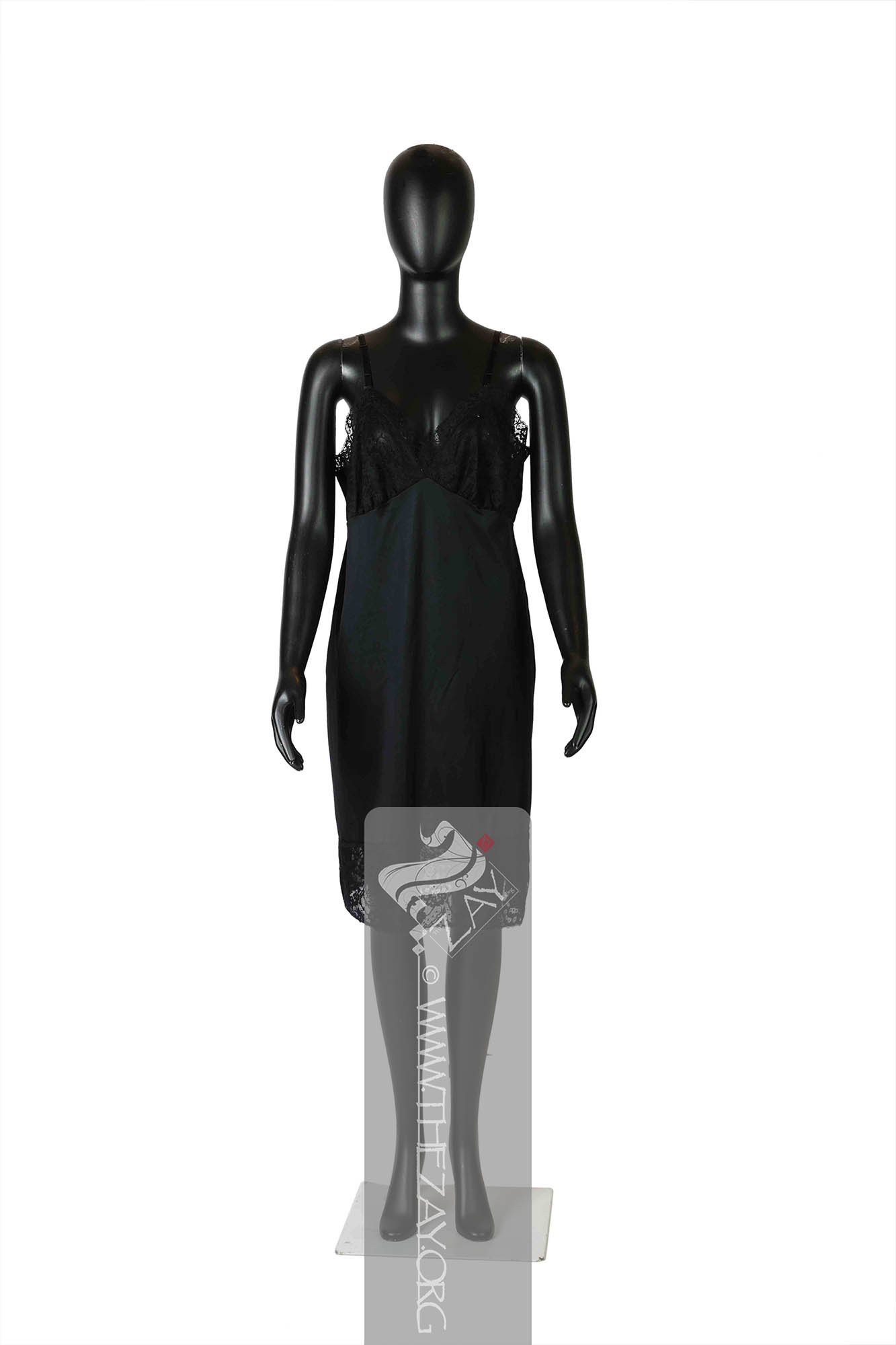
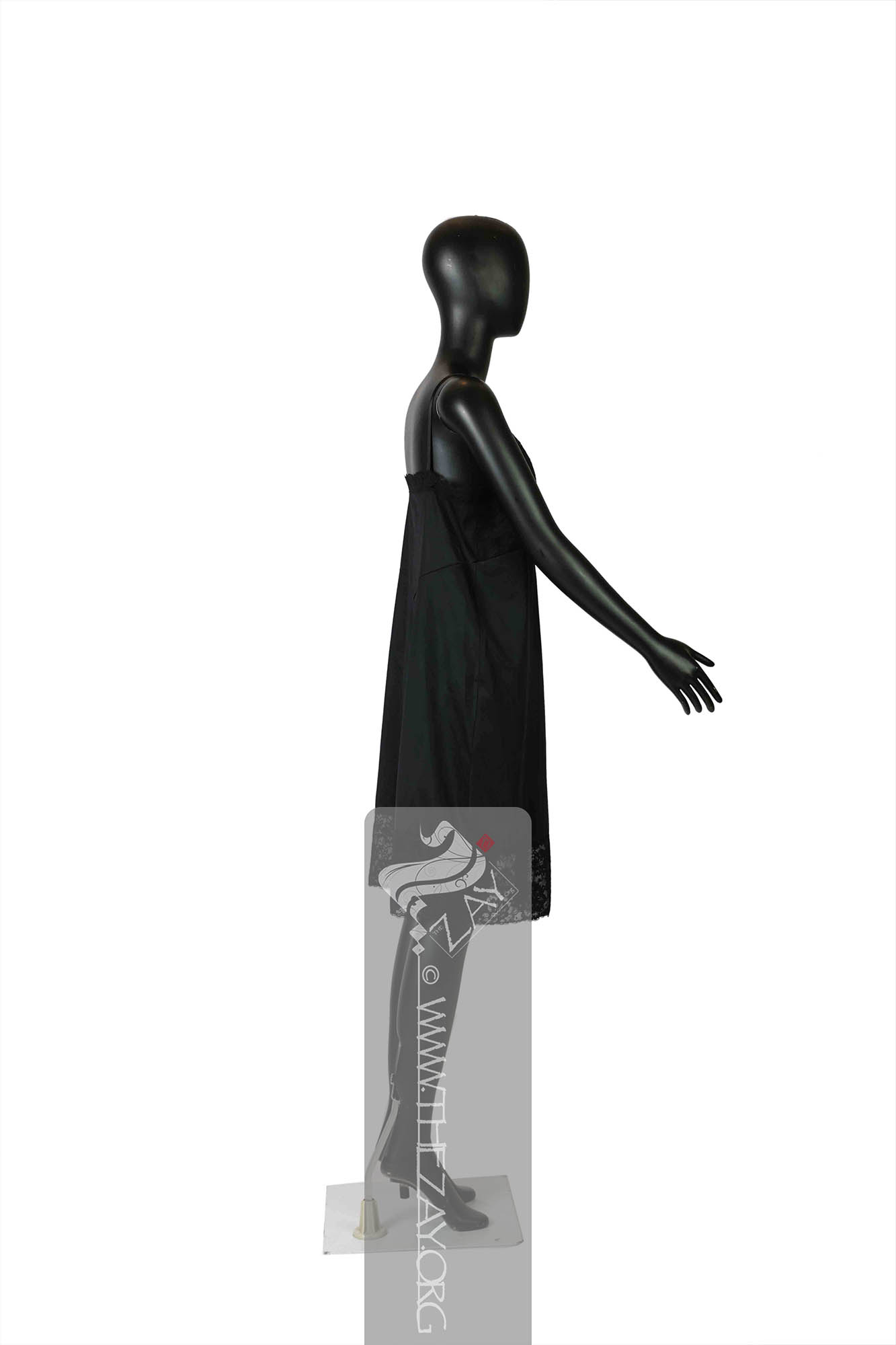
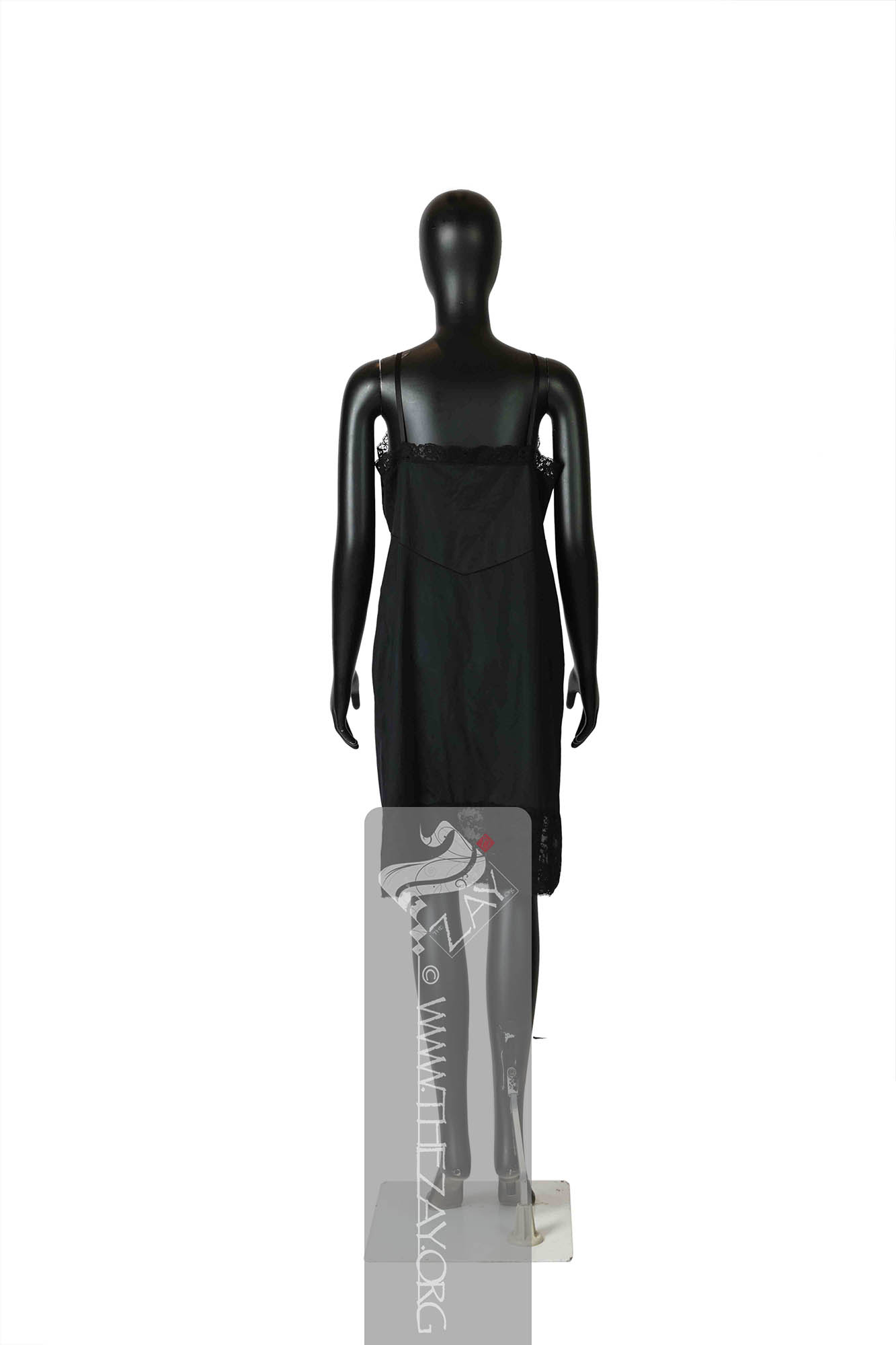
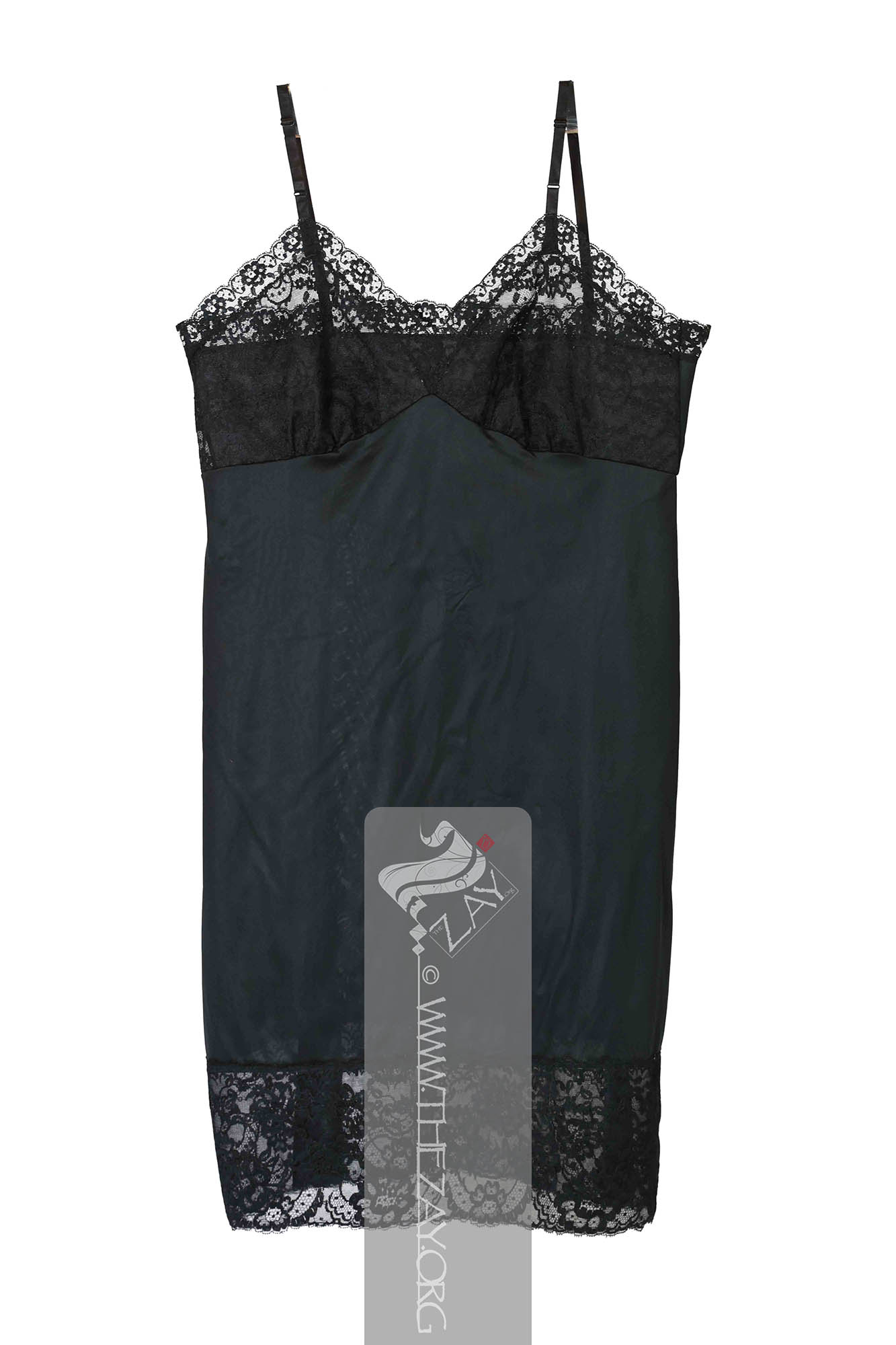
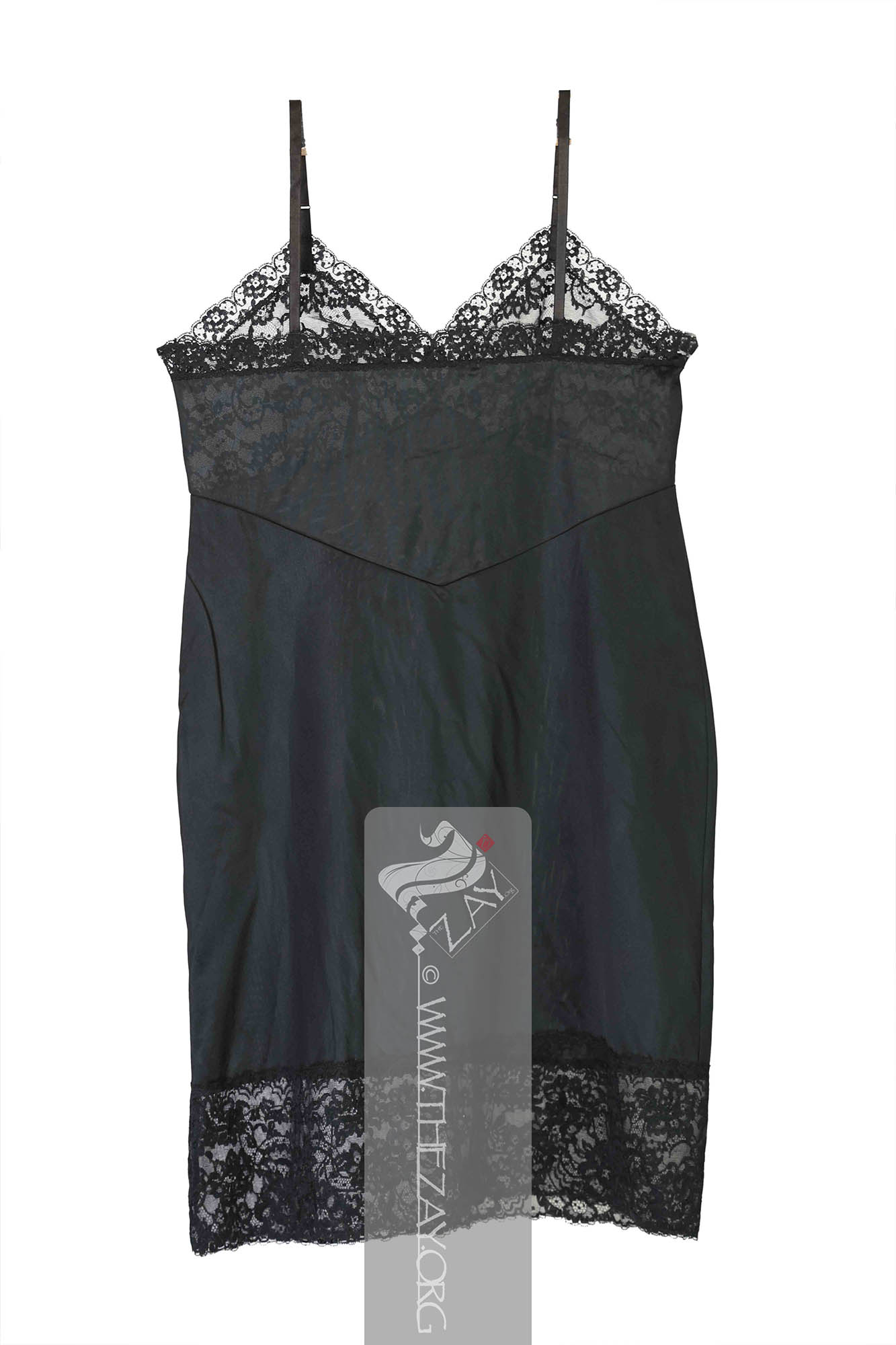
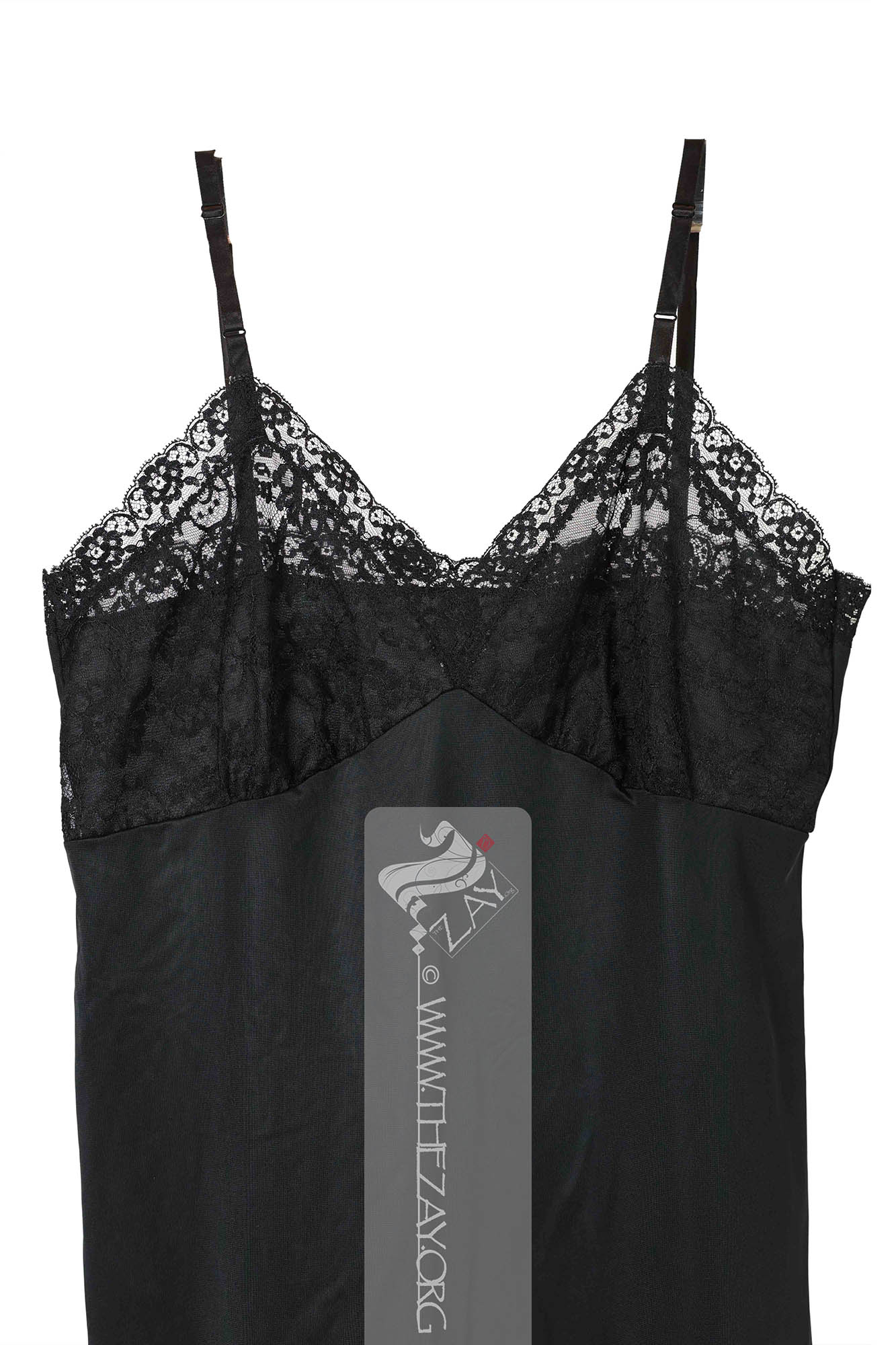
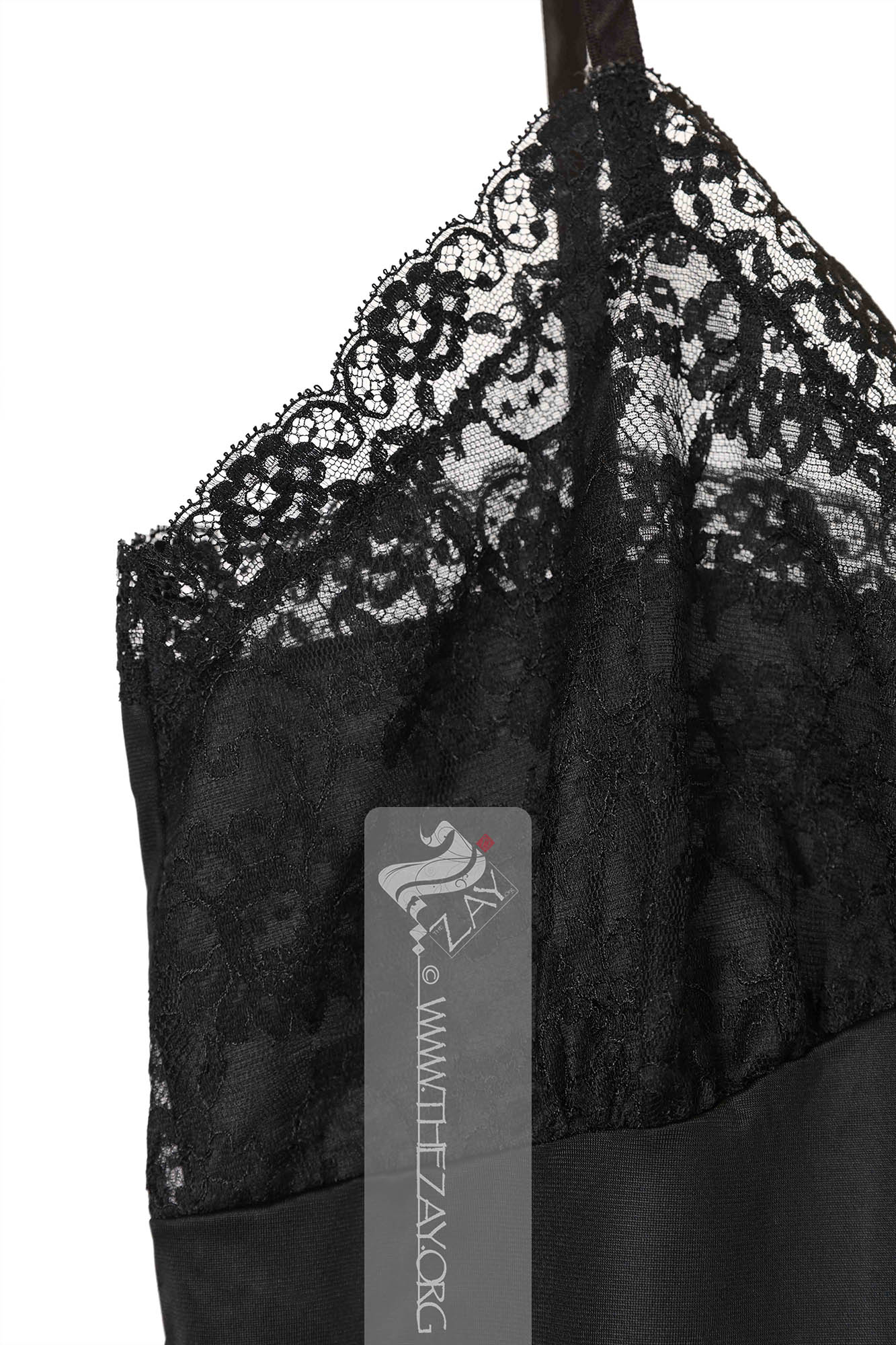



| Local Name | Gömlek; Atg |
| Object Category | Undergarment |
| Gender | Female |
| Date of object | c. 1960s |
| Place Of orgin | Europe |
| Region | Europe |
| Object Range | Global |
| Dimensions | Length: 98 cm Width: 43 cm |
| Materials | Silk Other |
| Technique | Machine Stitched Woven |
| Color | |
| Motif | Floral |
| Provenance | Donated, Basūs & Asīl Hāfuth, Baghdad 2019 |
| Location | The Zay Zay: (Arabic: costume, Pl. azyaā’), a set of clothes in a style typical of a particular country or historical period. Initiative |
| Status | In Storage |
| ZI number | ZI2019.500525a IRAQ |
Object Note
Part of a set with another item (ZI2019.500525 IRAQ) also in the collection.
Object History
This piece was donated to The Zay Zay: (Arabic: costume, Pl. azyaā’), a set of clothes in a style typical of a particular country or historical period. Initiative by Basūs & Asīl Hāfuth in 2019 to be added to and enhance The Zay Zay: (Arabic: costume, Pl. azyaā’), a set of clothes in a style typical of a particular country or historical period. Initiative collection.
The piece originally belonged to Khawla, Basūs & Asīl’s mother, Shahbal Fakhri Al-Kafaf, who was a matriarch to a large, venerable Iraqi family. Born in Baghdad in 1923 to an Iraqi father and a Turkish mother Shahbal was known for her wit, elegance, and graciousness. She epitomised the best of Baghdad society of her time.
The family has enjoyed close ties with Dr. Reem over several years, with friendship between the members of both families in every succeeding generation.
Object Features
This is a woman’s knee-length slip or chemise (gömlek
Gömlek: (Proto-Turkic: köyŋelek – Shirt; Azerbaijani: köynək – Shirt; Turkmen: koynek
Koynek: A traditional long, loose-fitting tunic or dress worn by Turkmen women in Central Asia typically made of silk or cotton, adorned with intricate embroidery, and often characterized by vibrant colours and geometric patterns. It is cultural symbol of significant importance reflecting the artistic heritage of Turkmen people. – long loose tunic dress), a traditional calf-length sleeved undershirt or tunic generally made of a plain white cotton, silk, or linen fabric, some more lightweight than others, worn by both Ottoman men and women of all communities throughout the empire. Atg: (Arabic), possibly a colloquial Iraqi term for a chemise like undergarment worn by women in Iraq. Also sometimes called the gömlek
Gömlek: (Proto-Turkic: köyŋelek – Shirt; Azerbaijani: köynək – Shirt; Turkmen: koynek
Koynek: A traditional long, loose-fitting tunic or dress worn by Turkmen women in Central Asia typically made of silk or cotton, adorned with intricate embroidery, and often characterized by vibrant colours and geometric patterns. It is cultural symbol of significant importance reflecting the artistic heritage of Turkmen people. – long loose tunic dress), a traditional calf-length sleeved undershirt or tunic generally made of a plain white cotton, silk, or linen fabric, some more lightweight than others, worn by both Ottoman men and women of all communities throughout the empire. Ṣāyah: (Classical Persian: sāya – shadow; Synonyms: zubūn, qumbāz, gombaz, yalak
Yalak: (Ottoman Turkic: yelek
Yelek: (Old Anatolian: yélek – Vest; Synonyms: Jelick, Jilek), short waist or hip length vest traditionally worn by both Ottoman men and women throughout the empire. Ranging from sleeveless to full sleeves, these vests were usually front open and without any fastenings. Often cepken jackets were used as yelek. – a hip or waist length vest; from Old Anatolian: yélek – Vest), a short-sleeved waistcoat traditionally worn by men and a long outer robe or tight jacket either sleeveless or short sleeved with a tight bodice traditionally worn by women in the Ottoman controlled Levant.
The gömlek
Gömlek: (Proto-Turkic: köyŋelek – Shirt; Azerbaijani: köynək – Shirt; Turkmen: koynek
Koynek: A traditional long, loose-fitting tunic or dress worn by Turkmen women in Central Asia typically made of silk or cotton, adorned with intricate embroidery, and often characterized by vibrant colours and geometric patterns. It is cultural symbol of significant importance reflecting the artistic heritage of Turkmen people. – long loose tunic dress), a traditional calf-length sleeved undershirt or tunic generally made of a plain white cotton, silk, or linen fabric, some more lightweight than others, worn by both Ottoman men and women of all communities throughout the empire.
A 1960s black chemise with a label that reads ‘Van Roalte, so 38L’ it was possibly a European piece that was purchased to be worn as a gömlek
Gömlek: (Proto-Turkic: köyŋelek – Shirt; Azerbaijani: köynək – Shirt; Turkmen: koynek
Koynek: A traditional long, loose-fitting tunic or dress worn by Turkmen women in Central Asia typically made of silk or cotton, adorned with intricate embroidery, and often characterized by vibrant colours and geometric patterns. It is cultural symbol of significant importance reflecting the artistic heritage of Turkmen people. – long loose tunic dress), a traditional calf-length sleeved undershirt or tunic generally made of a plain white cotton, silk, or linen fabric, some more lightweight than others, worn by both Ottoman men and women of all communities throughout the empire. Ṣāyah: (Classical Persian: sāya – shadow; Synonyms: zubūn, qumbāz, gombaz, yalak
Yalak: (Ottoman Turkic: yelek
Yelek: (Old Anatolian: yélek – Vest; Synonyms: Jelick, Jilek), short waist or hip length vest traditionally worn by both Ottoman men and women throughout the empire. Ranging from sleeveless to full sleeves, these vests were usually front open and without any fastenings. Often cepken jackets were used as yelek. – a hip or waist length vest; from Old Anatolian: yélek – Vest), a short-sleeved waistcoat traditionally worn by men and a long outer robe or tight jacket either sleeveless or short sleeved with a tight bodice traditionally worn by women in the Ottoman controlled Levant. Hashmī: (Arabic: Hashim (House of) – an Arab royal family from the Banu Hashim clan of the Quraysh tribe), a type of elaborately decorated women’s traditional garment or thawb
Thawb: (Arabic: thawb, Pl. Athwāb/thībān), can be pronounced thobe
Thobe: (Arabic: thawb, Pl. Athwāb/thībān), can be pronounced thawb or tobe
Tobe: (Arabic: thawb, Pl. Athwāb/thībān), can be pronounced thawb or thobe based on locale. The standard Arabic word for ‘fabric’ or ‘garment’. It can refer to a qamīs-like tunic worn by men and women in the Arabian Peninsula, Iraq, the southern and south-western ports and islands of Iran, and some countries in East and West Africa. More specifically, it can refer to the square-shaped Bedouin overgarment worn by women. based on locale. The standard Arabic word for ‘fabric’ or ‘garment’. It can also refer to a qamīs-like tunic worn by men and women in the Arabian Peninsula, Iraq, the southern and south-western ports and islands of Iran, and some countries in East and West Africa. More specifically, it can refer to the square-shaped Bedouin overgarment worn by women. or tobe
Tobe: (Arabic: thawb, Pl. Athwāb/thībān), can be pronounced thawb or thobe based on locale. The standard Arabic word for ‘fabric’ or ‘garment’. It can refer to a qamīs-like tunic worn by men and women in the Arabian Peninsula, Iraq, the southern and south-western ports and islands of Iran, and some countries in East and West Africa. More specifically, it can refer to the square-shaped Bedouin overgarment worn by women. based on locale. The standard Arabic word for ‘fabric’ or ‘garment’. It can also refer to a qamīs-like tunic worn by men and women in the Arabian Peninsula, Iraq, the southern and south-western ports and islands of Iran, and some countries in East and West Africa. More specifically, it can refer to the square-shaped Bedouin overgarment worn by women in the Arabian Gulf region. from Iraq that was named after the royal family that ruled Iraq until the mid 20th century.
Iraq, located south of Türkiye, was a significant Arab territory under the rule of the Ottoman Empire for approximately four centuries. In the northern province of Mosul, which was then under Ottoman rule, the prevalent modes of dress were heavily influenced by the fashion trends originating in Istanbul.
As such, traditionally, women would possibly wear an Ottoman-style gömlek
Gömlek: (Proto-Turkic: köyŋelek – Shirt; Azerbaijani: köynək – Shirt; Turkmen: koynek
Koynek: A traditional long, loose-fitting tunic or dress worn by Turkmen women in Central Asia typically made of silk or cotton, adorned with intricate embroidery, and often characterized by vibrant colours and geometric patterns. It is cultural symbol of significant importance reflecting the artistic heritage of Turkmen people. – long loose tunic dress), a traditional calf-length sleeved undershirt or tunic generally made of a plain white cotton, silk, or linen fabric, some more lightweight than others, worn by both Ottoman men and women of all communities throughout the empire. Ṣāyah: (Classical Persian: sāya – shadow; Synonyms: zubūn, qumbāz, gombaz, yalak
Yalak: (Ottoman Turkic: yelek
Yelek: (Old Anatolian: yélek – Vest; Synonyms: Jelick, Jilek), short waist or hip length vest traditionally worn by both Ottoman men and women throughout the empire. Ranging from sleeveless to full sleeves, these vests were usually front open and without any fastenings. Often cepken jackets were used as yelek. – a hip or waist length vest; from Old Anatolian: yélek – Vest), a short-sleeved waistcoat traditionally worn by men and a long outer robe or tight jacket either sleeveless or short sleeved with a tight bodice traditionally worn by women in the Ottoman controlled Levant. Gömlek: (Proto-Turkic: köyŋelek – Shirt; Azerbaijani: köynək – Shirt; Turkmen: koynek
Koynek: A traditional long, loose-fitting tunic or dress worn by Turkmen women in Central Asia typically made of silk or cotton, adorned with intricate embroidery, and often characterized by vibrant colours and geometric patterns. It is cultural symbol of significant importance reflecting the artistic heritage of Turkmen people. – long loose tunic dress), a traditional calf-length sleeved undershirt or tunic generally made of a plain white cotton, silk, or linen fabric, some more lightweight than others, worn by both Ottoman men and women of all communities throughout the empire.
Although amongst the urban Muslim elites and middle classes, the shift towards Westernised clothing occurred more gradually, the elites of Baghdad, as well as other urban Christian and Jewish communities, had fully transitioned from Ottoman attire to European-style clothing by the 1930s.
Links
Charuga: (Possibly Kurdish), a mantle-like embroidered women’s traditional garment from the Qaraqosh region in northern Iraq, traditionally fastened at the shoulder. Historically worn by field workers, it helped conceal dust and dirt, making them less visible during labour, it is a festive garment worn sparingly during festivals and other special occasions.
from Northern Iraq Has Arrived at the TRC!, www.trc-leiden.nl/trc/index.php/en/blog/1378-the-charugaCharuga: (Possibly Kurdish), a mantle-like embroidered women’s traditional garment from the Qaraqosh region in northern Iraq, traditionally fastened at the shoulder. Historically worn by field workers, it helped conceal dust and dirt, making them less visible during labour, it is a festive garment worn sparingly during festivals and other special occasions.
-from-northern-iraq-has-arrvied-at-the-trc. Accessed 29 Jan. 2024.